As California homeowners have fawned over and fallen for showier foreign plants through the years, California native plants seem to have gone to the wayside. Hurting the case for California native plants even more is that many homeowners don’t understand how to manage them, given they adapt to seasonality. (If done right, adding irrigation and pruning can prolong the showiness of the plant.)
However, there’s one often-overlooked benefit of these species that far outweighs their cons. It’s that, as their name alludes, native plants have adapted to their regions and have a symbiotic relationship with other biota and organisms surrounding them. These plants make for happy neighbors with other flora and fauna and that makes for a balanced landscape. It’s a system that benefits us all.
While we develop our gardens and landscapes, we should be mindful to keep these OGs in the mix to support those systems. For a start, here are a few of my favorite California native plants that lend some serious curb appeal.
1. California Lilac (Ceanothus spp.)
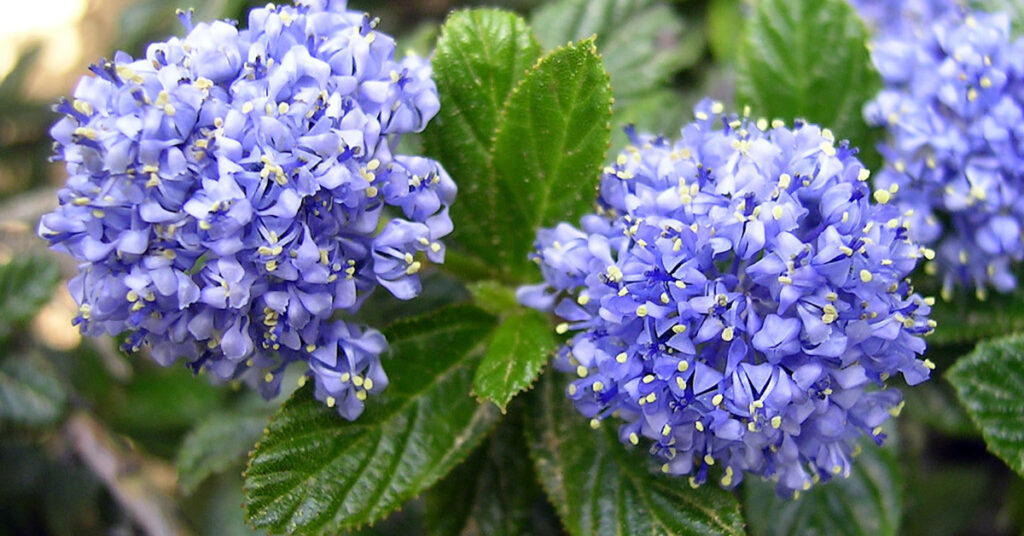
There are so many varieties with this blue to white blooming lilac. You can find them in tree forms that’ll grow up to 20 feet tall, or you can find them as ground covers standing less than 1 inch. Most prefer full sun, but some tolerate and thrive in part shade, making this a versatile native plant option. My favorites include Ceanothus “Diamond Heights,” a variegated chartreuse leaf that can handle part shade, and Ceanothus “Dark Star,” a dense medium-size garden shrub that has brilliant blue flowers.
2. Blue Sage (Salvia clevelandii)
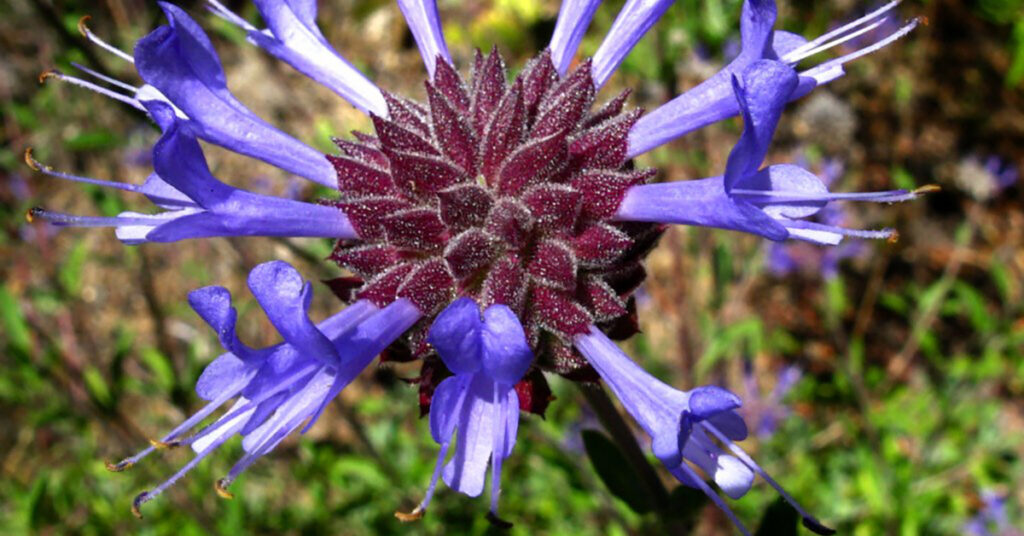
Salvia clevelandii is one of the most commonly seen California natives for good reason—this 3- to 5-foot, drought-tolerant shrub puts out! Flowers that is… and the flower shape is unique as can be. The color is a soft blue-purple hue, depending on the variety and, frankly, depending on who you’re asking. Deadheading the flowers after they bloom keeps the plant looking fresh instead of dry or spent and also encourages new growth. Salvia clevelandii does very well with little water and best with occasional deep watering.
3. Yerba Buena (Satureja douglasii)
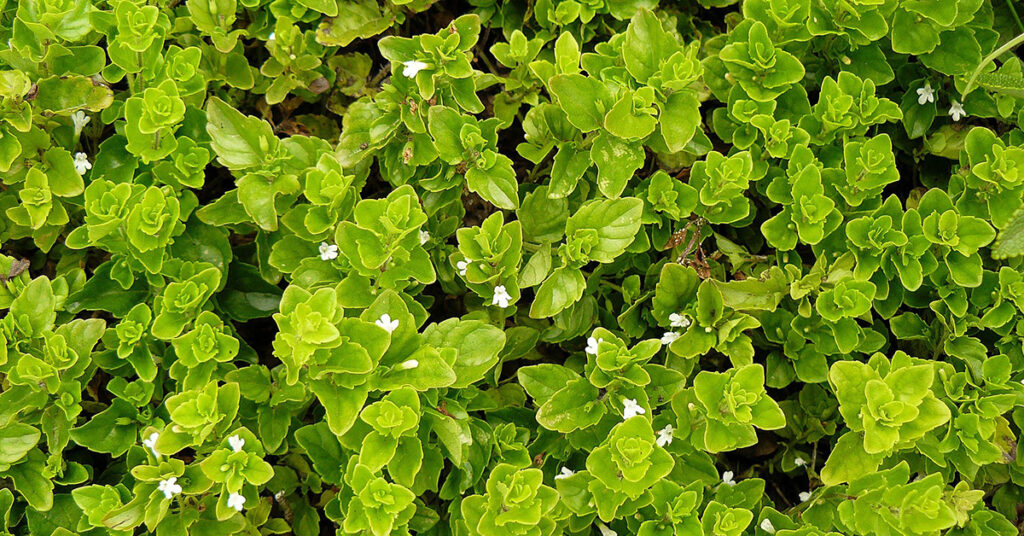
Yerba Buena is a simple, nonaggressive, creeping ground cover that brightens up a shady area of the yard. Plus, you can make a minty tea out of its fragrant leaves. I love seeing this grow around boulders in a yard or cascading over a small wall.
4. Matilija Poppy (Romneya Coulteri)
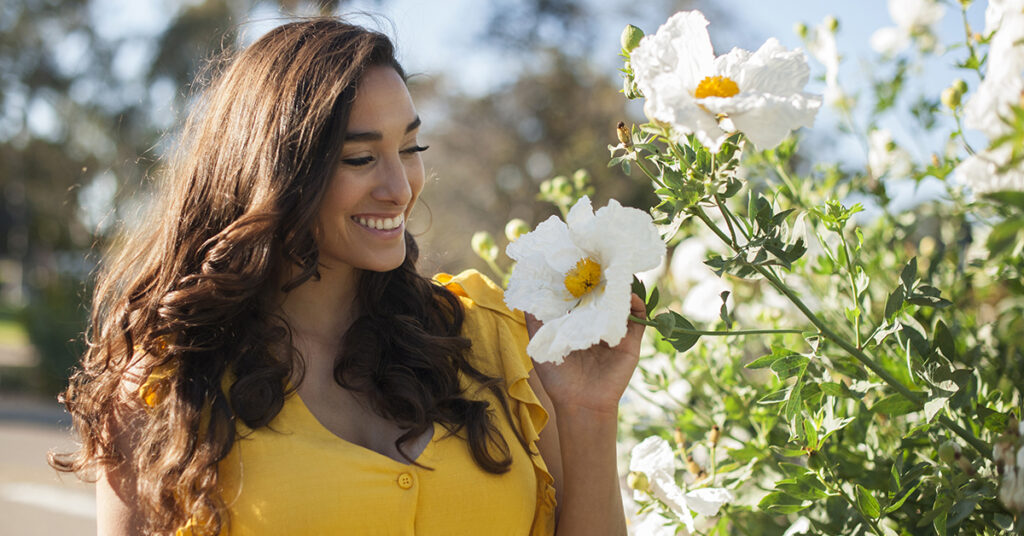
The Matilija Poppy is one of my favorite flowers ever. The roughly 6-foot tall plant will burst with giant white paper-mache style flowers with a yellow center, which is how it got its more common name—fried egg plant. This native will bring an airy and whimsical look to any yard. But consider yourself warned: It does go deciduous, meaning it looses foliage and flowers for part of the year, and comes back with vengeance. Install it in a larger yard, as it spreads by rhizomes.
5. Flannelbush (Fremontadendron spp.)
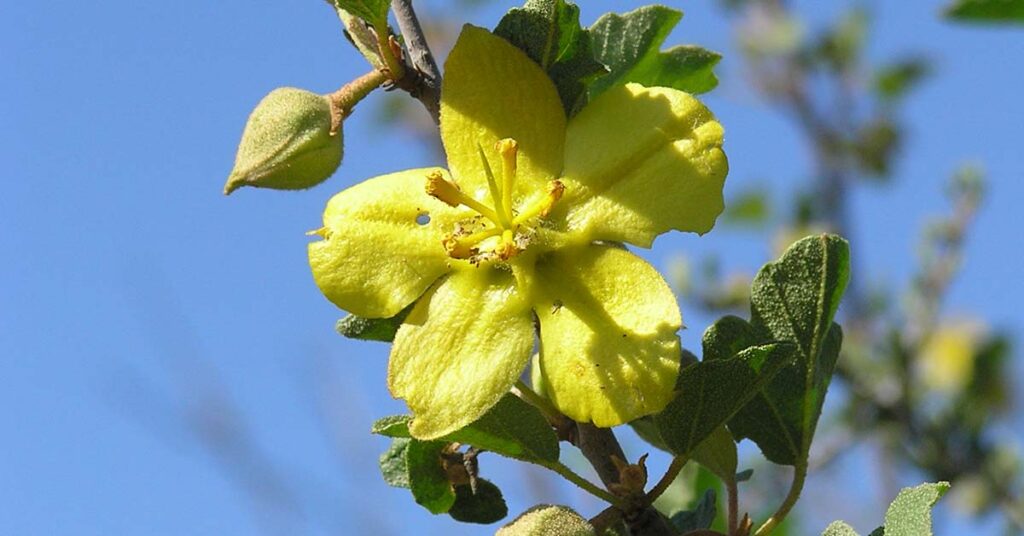
Because many of these do not plant easily, you don’t see them at the nurseries all the time. But, if you can get one to stick, they will be the lowest maintenance and showiest plants you have ever encountered. They prefer no irrigation once established, which means your job is easy as can be—watch and wait for those perfect yellow to orange blooms in the spring.





